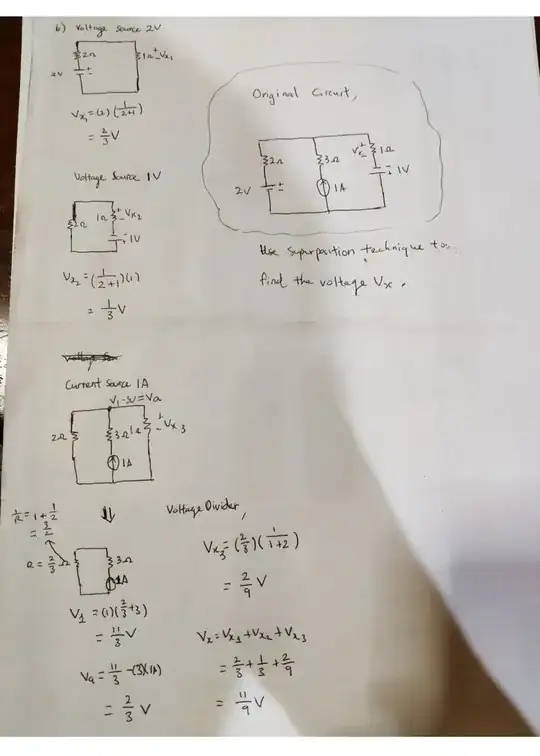I am trying to solve the superposition question, but unsure of the answer. If possible, please help.

I am trying to solve the superposition question, but unsure of the answer. If possible, please help.

No, your answer is incorrect.
Just by inspection, the 3V of the two voltage sources in series (current source is open-circuit) is pushing 1A through a total of 3Ω of resistance.
Then, when you consider the current source by itself (both voltage sources shorted), its 1A gets split 2:1 between the two outer resistors, for another 2/3A through the 1Ω resistor.
So the total current is 5/3A, and Vx is 5/3V.
The two top sub-circuits seem to be correct, but the last one is wrong.
Va is the Vx3. That is because when using voltages that aren't "across" something but are just there (called node voltages), you HAVE to specify the reference voltage. This is because absolute voltages do not exist; all voltages are "across" something in one respect or another.
Usually laziness leads to people omitting it and assuming the convention of just putting the reference at the bottom of the circuit (in this case at the "bottom" of the current source). If that is the case, then the voltage drop across the resistor that we care about is Va-ground = Va-0 = Vx3. Thus Vx3 = Va, and the final "voltage division" (that wasn't really voltage division) was unnecessary.
So, about that "voltage division": If done properly, the voltage division would give the same answer as Va. That is because it is a different way to do the same thing. The correct voltage division should've been this: Vtotal_voltage * Req / (Req + 3) = 11/3 * 2/3 / (2/3 + 3) = 11/3 * 2/3 / (11/3) = 2/3v = Va = Vx3
Hopefully that answers the question and clears up the confusion! Please let me know if there's something that doesn't make sense in my explanation, thanks!